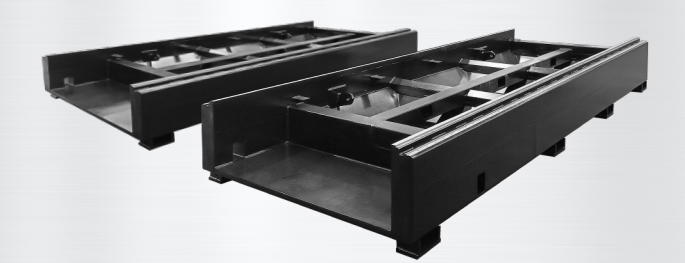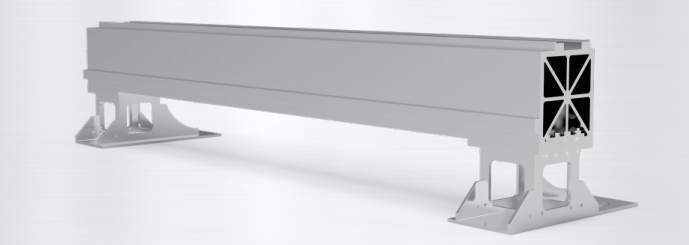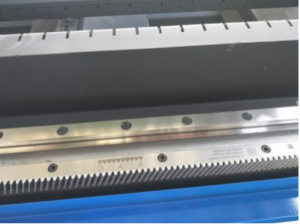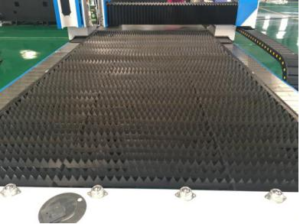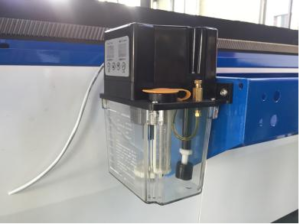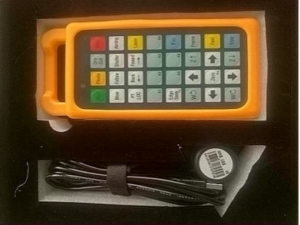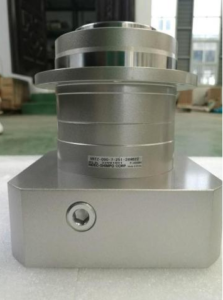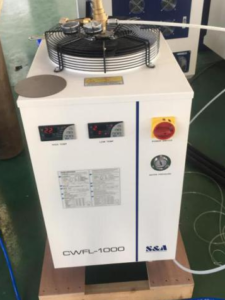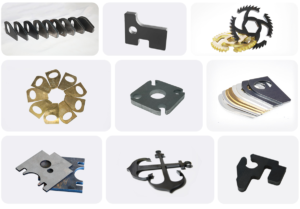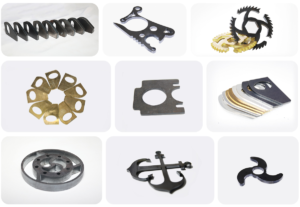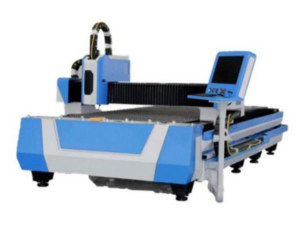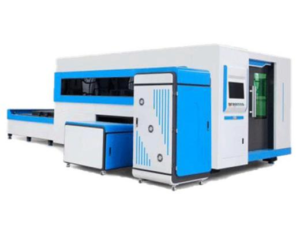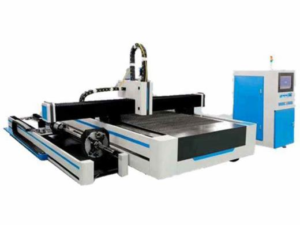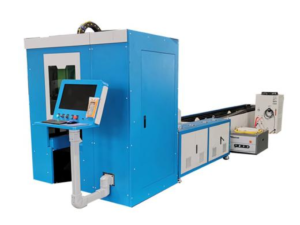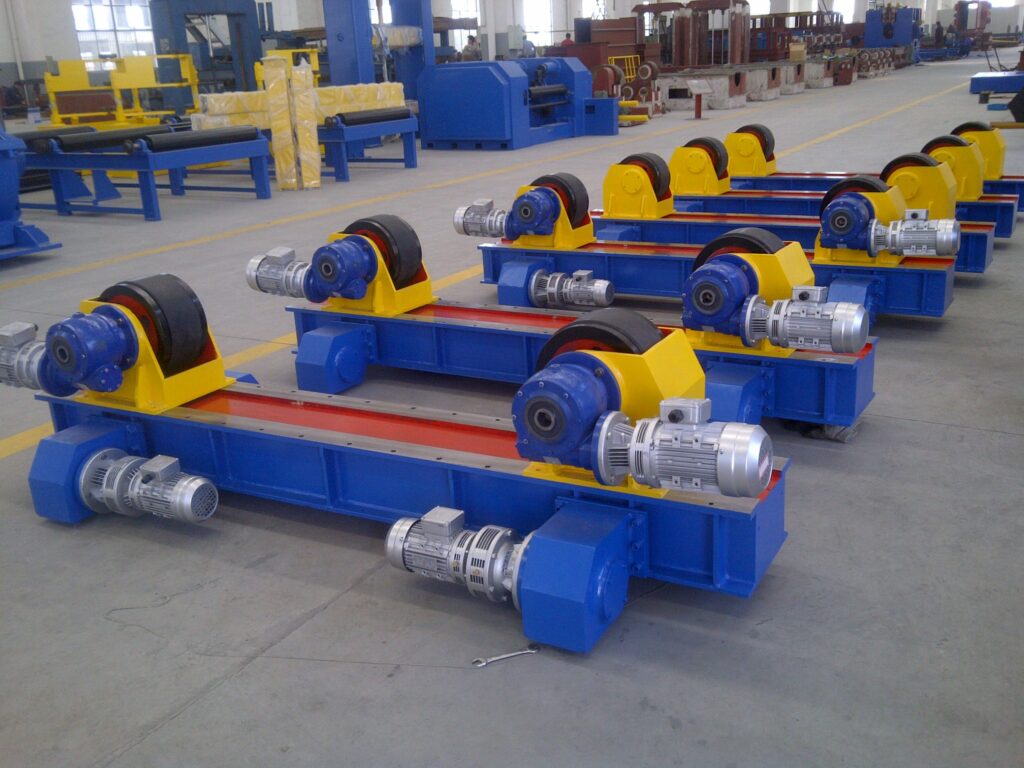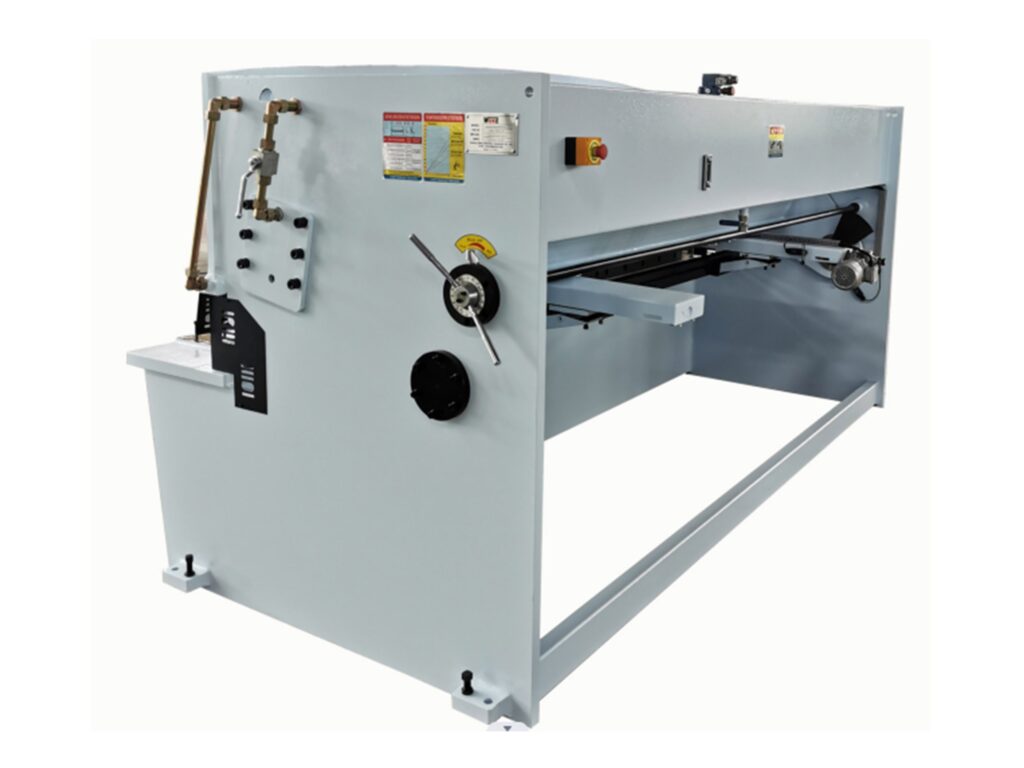1. What are the advantages of fiber laser cutting machines compared to traditional cutting machines?
A: Fiber laser cutting machines have the advantages of fast cutting speed, high precision, small heat-affected zone, strong material adaptability, low operating costs, and simple maintenance.
2. How to ensure the cutting quality of laser cutting machine?
A: The key to ensuring cutting quality is to select appropriate laser power, cutting speed, focus position and auxiliary gas. At the same time, it is also very important to maintain the equipment regularly and keep the optical components clean.
3. What are the safety precautions during operation of the laser cutting machine?
A: Operators need to wear appropriate protective equipment, such as safety glasses, to prevent laser damage. The equipment should be placed in a stable working environment and ensure that all safety protection devices are working properly.
4. What are the maintenance costs of an open-typr dual-drive fiber laser cutting machine?
A: Compared with traditional cutting equipment, fiber laser cutting machines have lower maintenance costs. Its main maintenance tasks include cleaning the optics, checking the wear of the guide rails and gear racks, and regularly changing the coolant.
5. How to choose laser power when cutting metal materials of different thicknesses?
A: When cutting metal materials of different thicknesses, lasers with corresponding power should be selected. Generally speaking, the thicker the material, the higher the laser power required. But also consider cutting speed and heat-affected zone to avoid overheating of the material or loss of cut quality.
Four common problem solutions
With the continuous development of industrial technology in our country, laser cutting technology is widely used in various processing industries, and laser cutting machines have advantages that other cutting processes do not have. Cutting quality is first-class, with a wide cutting range, fast cutting speed, good flexibility, and strong processing ability. However, there are also problems during laser cutting, such as incomplete cutting, rough surface, burrs, etc. To address these issues, the following professional treatment methods are usually adopted.
A. Burr issues
The formation of burrs is a very important factor in determining the quality of laser cutting, as the removal of burrs requires additional work. Therefore, we can visually judge the quality of cutting based on the quantity and degree of burrs.
Solutions
Firstly, check if there are any issues with the laser output, whether the spot is very round, and whether the spot is coaxial with the center hole of the nozzle. A circular spot indicates that the lateral distribution of laser energy is uniform, and the energy distribution of the light points formed after being focused by the lens is also more uniform, which leads to better cutting quality; The better the coaxiality between the spot and the nozzle center hole, the better the cutting quality.
Secondly, check whether there are any small particles, dust, splashing residues or other objects that affect the cutting quality during the laser transmission process, and whether there are small cracks in the lens that are not easily visible to the naked eye, all of which can affect the transmission of laser power.
Only after completing the above two checks can we determine whether the laser itself is in good condition. Then comes the adjustment of process parameters.
The burrs generated after stainless steel laser cutting have a certain hardness, which is very time-consuming to remove and also affects the appearance of the workpiece. It is best to address the root cause: the purity of the gas is crucial, and it is best not to use steel cylinder gas. Secondly, the cutting parameters need to be adjusted to the optimal level, and factors such as air pressure, flow rate, focal length, and cutting speed need to be adjusted multiple times.
Equipment+gas+parameters (adjusted to optimal)=cutting workpieces with fewer burrs
B. Roughness issue
Laser cutting of cross-sections will form vertical grooves, and the depth of the grooves determines the roughness of the cutting surface. The shallower the grooves, the smoother the cutting section. Roughness not only affects the appearance of edges, but also affects friction characteristics. In most cases, it is necessary to minimize roughness, so the shallower the texture, the higher the cutting quality.
Solutions
Cutting carbon steel generally encounters problems such as insufficient brightness of thin plate sections and rough sections of thick plates.
Generally speaking, a 1000W laser can cut carbon steel up to 4mm in brightness, 2000W is 6mm, and 3000W is 8mm.
C. Deformation problem
In laser cutting, the area near the incision is heated. At the same time, the structure of the metal undergoes changes. For example, some metals may harden.
Dents and corrosion have adverse effects on the surface of the cut edge, affecting the appearance, and they appear in cutting errors that should generally be avoided. If cutting causes the component to heat up sharply, it will deform.
Solutions
This is particularly important in precision machining, as the contours and connecting pieces here are usually only a few tenths of a millimeter wide. Controlling laser power and using short laser pulses can reduce component heating and avoid deformation.
D. Material discoloration issue
The color change near the cutting edge of stainless steel during cutting is mainly due to the oxidation of the material at high temperatures. Stainless steel is not only a high-temperature resistant material, but also an insulation material due to its poor thermal conductivity. When we cut these materials, due to their slow thermal conductivity, higher temperatures are generated and accumulated near the incision, resulting in oxidation of stainless steel in the air at high temperatures. The temperature and oxidation depth vary, resulting in different colors. In addition, slow cutting speed, incorrect focus, and low gas purity can cause surface discoloration of the board.
Solutions
1. The material is too hot, cool the material.
2. The feed rate is too low, increase the feed rate.
3. The material does not match the focal length of the laser head. Use a locator to test and adjust the focal length.
4. The air pressure is too low, increase the air pressure.
5. Nitrogen contains oxygen impurities, so use high-quality and high-purity nitrogen.
E. Incomplete cutting problem
Laser cutting is a complex process, and it is common to encounter situations where the cutting cannot be fully penetrated. There are many reasons why the sample cannot be cut through, the most common of which is the decrease in laser power or the aging of the lamp tube, which results in insufficient energy of the laser beam and causes the sample to be cut through. Excessive cutting speed, damage to the focusing lens resulting in poor focusing effect, incorrect optical path, and unstable voltage are all reasons why laser cutting cannot penetrate through. Of course, there are also many factors that can cause the sample to not cut through, such as material problems, insufficient pressure of auxiliary gases, and poor cooling effect of the cooling system due to water turbidity.
Solutions
1. To reduce the cutting speed appropriately, clean the contaminated reflector in a timely and reasonable manner, and replace the focusing lens.
2. For the problem of incorrect optical path, you can readjust the optical path and adjust the focal length until the laser strikes a spot on the paper that is concentric with the center of the nozzle.
3. When cutting copper and aluminum, it is best to polish its surface in advance or apply absorbent materials to address the issue of high reflectivity.
4. Regularly clean the foreign objects inside the nozzle, increase the pressure of the auxiliary gas, and replace the distilled water in the cooling system in a timely manner.
How to better use fiber laser cutting machines
With the continuous development of technology, many people have started to use fiber laser cutting machines. It can improve work efficiency and the cutting effect is also very good. However, due to improper operation, many problems and troubles will arise during use.
The laser output power of a metal laser cutting machine is not constant, and we need to make real-time adjustments according to processing needs. This step is very important, as the output power can have a direct impact on the processing technology performance of the laser cutting machine, which determines the cutting accuracy and efficiency of the laser cutting machine when cutting sheets.
1. Under what circumstances should the output power of the laser cutting machine be increased?
If the cutting speed of the laser cutting machine is too slow, the cutting speed can be accelerated by appropriately increasing the output signal power of the laser technology.
When cutting materials with larger thickness, the laser output power can be increased through internal control panel data to improve cutting performance.
Adding materials with high cutting density and hardness requires high performance of laser cutting machines. By continuously increasing laser output power and reducing cutting speed, this problem can be effectively solved.
For certain special materials, when long focal length lenses are needed to replace short focal length lenses, it is necessary to increase the laser output power.
2. How can laser cutting machines improve debugging to achieve faster and better cutting development?
In fact, laser cutting machines, like Chinese automotive companies, need to be tested and debugged before leaving the factory, and maintained during the use and management process in order to maintain the equipment as a problem in good operating condition. Laser cutting machines have many components, and some parts have a shorter maintenance period. For example, to protect lenses, we need to update them regularly based on the frequency of cutting and work and study time.
2.1 How to debug a laser cutting machine?
2.1-1 Adjust the machine assembly to improve cutting efficiency.
1. Guide rail: When installing the guide rail, it must be parallel. If the guide rail is not parallel, there will be resistance during the operation and development of the machine equipment. The workpiece designed by cutting will have serrated edges. Therefore, the Y-axis guide rail must fully ensure the parallelism of the system.
Beam and coupling: During the installation process of the machine’s beam and coupling, if the screws are not tightened, or if the locking is tilted or loose, it will affect the cutting effect of the laser cutting machine. So it is necessary to ensure the installation quality and accuracy of the components.
2.1-2 Debugging laser machine parameters to improve the cutting processing speed of enterprise machines.
During the cutting process, we need to gradually develop and adjust machine learning parameters. In this case, if the machine parameters are not adjusted properly by the enterprise, the cutting speed and effect will be affected to a certain extent. When leaving the factory, each laser cutting machine can set and save design parameters based on different power sizes, cutting materials, and thickness data. In the later stage, adjustments can be made according to the needs of network users. When setting parameters, the following points should be noted:
① Initial development speed: As the name suggests, this question sets the speed at which a machine starts. The initial speed is not as fast as possible, in fact, if the speed is too fast, the machine may start to vibrate very much.
② Acceleration: Acceleration refers to the process in which a machine can accelerate from its initial development speed to normal use during enterprise production. Similarly, when preparing to end cutting, there is also an economic deceleration process. If the acceleration is too low, it will affect the speed of social machine cutting processing.
2.1-3 Precision adjustment method for laser cutting machine.
1. When the focal point of the laser is set to the minimum, it is shot to establish its initial effect, and the focal length position is determined by the size of the spot effect. We believe that as long as we recognize the minimum point of the laser, the optimal processing focal length is obtained for this position information, and we can start to develop and analyze the work of the processing enterprise.
In the debugging of the laser cutting machine in the first part, we can use some test papers and wasted spot shots on the workpiece to determine the accuracy of the focal length position. The position of the laser head height on the mobile company will vary in size when the laser is used for spot shooting. Determine the focal length and optimal position of the laser head by adjusting the position of different positions multiple times to find the minimum spot position
3. What should be done if there are burrs, lumps, and deep grooves on the cutting surface during the cutting process?
3.1 Investigation of Burr Problems
Improper nozzle selection, replace with larger caliber nozzles to increase gas flow.
Negative defocus mismatch, increase negative defocus to penetrate the bottom position.
Insufficient air pressure prevents sufficient cutting, increase the air pressure appropriately.
3.2 Troubleshooting of tumor residue issues
Improper nozzle selection, replace with larger caliber nozzles to increase gas flow.
Improper speed, the reason for excessive speed cannot be ruled out, slow down the speed.
The quality of the board is poor, and the smaller diameter nozzle cannot effectively eliminate slag. It is recommended to choose a better board.
3.3 Deep investigation of cross-sectional patterns
Improper nozzle selection, replace with smaller caliber nozzles.
Excessive air pressure causes stripes to appear during burning, so reduce the air pressure appropriately.
Improper speed, either too fast or too slow, can cause the stripes to burn out. Suggest adjusting the speed to match the power and speed.
Overall, the quality of the cut section is influenced by multiple factors, and the interaction between various variables is not independent. The debugging process is relatively complex, testing technology, experience, and patience.
4. Why does the power of the laser cutting machine decrease?
If it is a machine, there will be losses, and the same goes for metal material laser cutting machines. In the long-term development and use process, we will definitely affect the existence of some more or less losses, such as slow cutting speed, poor cutting accuracy, and so on. Many people can think that it must be a decrease in laser power. In fact, there are many reasons that affect the decrease in laser cutting machine power, not necessarily laser problems. The following analyzes the reasons for the power failure of the fiber laser cutting machine:
Firstly, it is a focal point position that affects the cutting accuracy, especially the diameter of the social focal spot. The diameter of the focal spot is directly proportional to the depth of focus of the focusing lens. The smaller the depth of focus of the focusing lens, the smaller the diameter of the focal spot.
Secondly, the distance between the nozzle and the workpiece also affects the power capability of the fiber optic laser cutting machine. Being too far away can cause unnecessary waste of kinetic energy, while being too close can affect the dispersion of splashed cutting products. The appropriate distance is 0.8mm. Another fiber optic laser cutting machine mainly relies on its follow-up adjustment to achieve the cutting of uneven surface machined parts. During the operation and management process, the height between the nozzle and the machined part is not basically consistent.
Thirdly, cutting speed and cutting speed have a significant impact on the power of fiber laser cutting machines, and the cutting speed is directly proportional to the power of the fiber laser cutting machine. The quality of cutting work is related to the management of laser beam quality, as well as the characteristics of the laser beam focusing information system, that is, the size of the laser beam after focusing has a significant impact on the development of laser cutting quality.
There is also the size of the auxiliary gas, the auxiliary gas and gas pressure, and it is preferred to use compressed air or inert gas, which also affects the power of the fiber laser cutting machine. If the thickness of the processed material can be increased, or if the cutting speed develops slowly, the gas pressure should be appropriately reduced. Using gas pressure cutting with lower efficiency can prevent edge frosting.
Finally, if the first four have been excluded, it is considered a decrease in laser power. Any device that is used for a long time can lead to problems and aging of some components. Laser is the core and most important component of metal laser cutting machines, and long-term use can lead to a decrease in power. In addition to the above points, the performance, size, and thickness of processing technology materials can also affect the power capability of fiber laser cutting machines.



